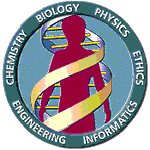
The Human Genome ProjectWhat is the Human Genome Project?The Human Genome Project (HGP) is an international research program designed to construct detailed genetic and physical maps of the human genome, to determine the complete nucleotide sequence of human DNA, to localize the estimated 50,000-100,000 genes within the human genome, and to perform similar analyses on the genomes of several other organisms used extensively in research laboratories as model systems. The scientific products of the HGP will comprise a resource of detailed information about the structure, organization and function of human DNA, information that constitutes the basic set of inherited "instructions" for the development and functioning of a human being. Successfully accomplishing these ambitious goals will demand the development of a variety of new technologies. It will also necessitate advanced means of making the information widely available to scientists, physicians, and others in order that the results may be rapidly used for the public good. Improved technology for biomedical research will thus be another important product of the HGP. From the inception of the HGP, it was clearly recognized that acquisition and use of such genetic knowledge would have momentous implications for both individuals and society and would pose a number of policy choices for public and professional deliberation. Analysis of the ethical, legal, and social implications of genetic knowledge, and the development of policy options for public consideration are therefore yet another major component of the human genome research effort. When did the HGP begin?The HGP was conceived in the mid-1980's and was widely discussed within the scientific community and public press through the last half of that decade. In the United States, the Department of Energy (DOE) initially, and the National Institutes of Health (NIH) soon thereafter, were the main research agencies within the U.S. government responsible for developing and planning the project. By 1988, the two agencies were working together, a relationship that was formalized by the signing of a Memorandum of Understanding to "coordinate research and technical activities related to the human genome." The initial planning process culminated in 1990 with the publication of a joint research plan, "Understanding Our Genetic Inheritance: The U.S. Human Genome Project. The First Five Years FY 1991-1995." What are the goals of the HGP?The initial research plan set out specific goals for the first five years (1990-1995) of what was projected to be a fifteen-year research project and focused the efforts of the research community on the most important initial objectives. Because progress was more rapid than anticipated, the 1990 plan was updated in 1993 by extending the initial goals and scope of genome research. The new goals were publicly presented in an article in Science ( Science 262:43-46;1993). These goals were also a joint NIH-DOE effort and covered Fiscal Years 1994-1998. In 1998 another NIH-DOE 5-year plan was developed to cover completion of the original objectives of sequencing the human genome and to expand the HGP to the study of genetic variation and functional analysis of the genome. This plan was also published in Science. ( Science. 282: 682-689; October 23, 1998.) |
Last updated:
© Copyright Jan Martinec 1999